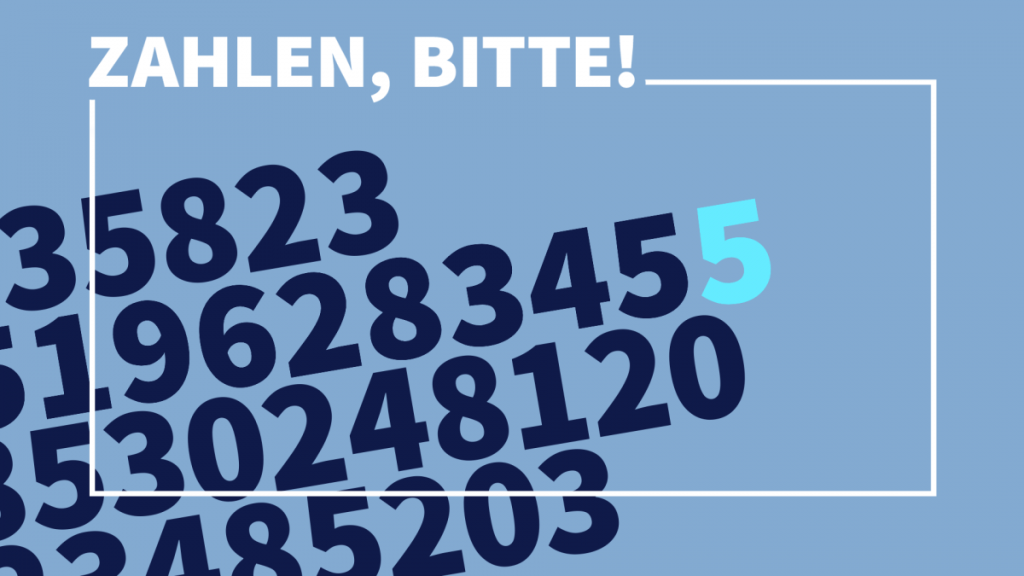65 years ago, the designers and architects Ray and Charles Eames made a series of five educational films, which they collected under the title “Peepshows – Kids should see this”. Topology explained the field of mathematical topology, followed by a film about a special application: Jordan’s curve theorem.
Another film dealt with symmetrical solids and “2n – A Story of the Power of Numbers” explained mathematical functions. The final film was Eratosthenes, a short film about how this genius calculated the circumference of the earth in ancient times using pedometers on the route between Alexandria and Syene and shadow pointers.
The peepshows were commissioned by IBM, which wanted to give itself a new image. IBM also commissioned the Eames couple to design the exhibition “Mathematica: A World of Numbers … and Beyond” in an IBM-sponsored wing of the California Museum of Natural History in Los Angeles. Mathematica and the Peepshow films were shown for 37 years until the wing had to be demolished. Copies of this important Eames exhibition are still on display in museums in Chicago, Boston and New York.
In this section, we present amazing, impressive, informative and funny figures (“Zahlen”) from the fields of IT, science, art, business, politics and, of course, mathematics every Tuesday.
The wordplay “Zahlen, bitte!” for a section about numbers is based on the ambiguity of the German word “Zahlen.” On one hand, “Zahlen” can be understood as a noun in the sense of digits and numerical values, which fits the theme of the section. On the other hand, the phrase “Zahlen, bitte!” is reminiscent of a waiter’s request in a restaurant or bar when they are asked to bring the bill. Through this association, the section acquires a playful and slightly humorous undertone that catches the readers’ attention and makes them curious about the presented numbers and facts.
Various films bring mathematics closer
To this day, the films of the Peepshows such as Eratosthenes, Topology or Symmetry have lost none of the lightness and elegance with which IBM was advertised. The contact with Ray and Charles Eames was established by IBM’s in-house architect and designer Eliot Noyes, known for his design of the IBM Selectric ball-head typewriter.
Ray and Charles Eames had already started filming their ideas in the 1950s. One of the first films was House: After Five Years of Living, in which the interior of the model house designed by the Eames for an architecture magazine was shown. The couple moved into the house in 1949. While neither of them can be seen, the variety of objects collected over five years can be marveled at. In the same spirit, they also filmed shop windows in which the furniture they had designed was displayed. Later, real animated films were made, such as “A Communications Primer”, produced in 1953, which was intended to familiarize viewers with Claude Shannon’s theories.
Empfohlener redaktioneller Inhalt
Mit Ihrer Zustimmung wird hier ein externes YouTube-Video (Google Ireland Limited) geladen.
YouTube-Video immer laden
YouTube-Video jetzt laden
IBM’s new image was first tested in Europe with one of the Eames films: At the 1958 World’s Fair in Brussels, the film “The Information Machine or Creative Man and the Data Processor” was shown in the IBM pavilion. In a way, this film was the sequel to the Communications Primer. The Information Machine”, which was shown in Brussels, spans the arc from the early days of human development to the information age.
After the World’s Fair and the continuing success of Mathematica, Ray and Charles Eames, together with their friend Eero Saarinen, were commissioned to realize the entire IBM pavilion at the New York World’s Fair, which took place in 1964 and 1965. In addition to numerous information islands designed by the Eameses and the Mathematica exhibits, an “information egg” was enthroned above the pavilion, providing space for around 500 spectators to experience a multimedia show on 22 large screens created by the Eames Office. According to IBM, the egg was intended to resemble the ball head of the Selectric. The collaboration with IBM culminated in 1971-72 in the film A Computer Perspective, which shows the entire history of computer technology up to the IBM System /360.
Microcosm and macrocosm in one movie
Finally, IBM also became the sponsor of what is probably the most famous Eames film, The Power of Ten, which was released in 1977 and was simply called “Zehn Hoch” in German. The concept for this award-winning film with astrophysicist Philipp Morrrison about the powers of ten, which can be used to describe both the microcosm and the macrocosm, had already been developed in the 1960s. However, its realization was repeatedly postponed in order to incorporate the latest findings from astronomy and particle physics.
Empfohlener redaktioneller Inhalt
Mit Ihrer Zustimmung wird hier ein externes YouTube-Video (Google Ireland Limited) geladen.
YouTube-Video immer laden
YouTube-Video jetzt laden
When the film was released, it dealt with 40 powers of ten from 1024 to 1016. When the book accompanying the movie “Powers of Ten: a book about the relative size of things in the universe and the effect of adding another zero” was published in 1982, it was 42 powers of ten –, which is a number that always interests readers of this column.
After this movie, the collaboration with IBM came to an end. Until Charles Eames’ death in 1978, the couple continued to produce a series of Polavision films to promote Polaroid’s instant film concept. Over the course of their working life together, Ray and Charles Eames released 125 films.
(mho)
Don’t miss any news – follow us on
Facebook,
LinkedIn or
Mastodon.
This article was originally published in
German.
It was translated with technical assistance and editorially reviewed before publication.
Dieser Link ist leider nicht mehr gültig.
Links zu verschenkten Artikeln werden ungültig,
wenn diese älter als 7 Tage sind oder zu oft aufgerufen wurden.
Sie benötigen ein heise+ Paket, um diesen Artikel zu lesen. Jetzt eine Woche unverbindlich testen – ohne Verpflichtung!

